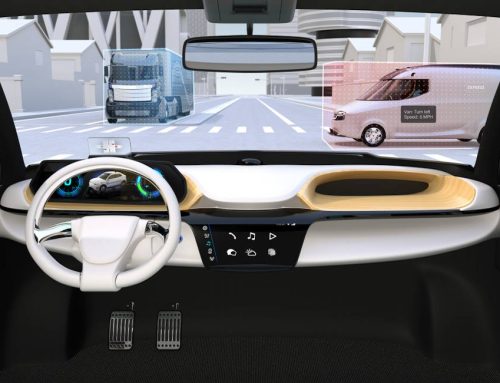Of all the innovations in vehicle technology, Pedestrian Collision Warning (PCW) is one of the most important. Used properly, it can save people walking near or across roadways from experiencing serious or fatal injuries. There’s no higher purpose than that for advanced, connected technology.
While PCW is important everywhere, it’s especially a must-have for commercial fleets in urban areas where there are far more pedestrians and bikers. Across the United States, a pedestrian dies in a traffic accident every 88 minutes. Another 137,000 are injured, according to the Centers for Disease Prevention and Control (CDC).
PWC systems give drivers the reaction time they need to prevent accidents. That’s why it’s become an in-demand collision avoidance system for fleet vehicles.
Why Fleets Need Pedestrian Collision Warning Systems
As the CDC statistics show, pedestrian fatalities happen far too often in the United States. In 2020, the number of pedestrians killed when struck by a vehicle had the highest ever one-year increase, with more than 6,700 deaths, according to the Governors Highway Safety Association (GHSA).
GHSA Executive Director Jonathan Adkins said in a news release that “we need to treat pedestrian safety like the public health emergency that it is. We must strengthen our efforts to protect those on foot from traffic violence by implementing equitable and proven countermeasures that protect people walking and address those driving behaviors that pose the greatest risk.”
One of those countermeasures is a dependable PWC system. In addition to avoiding injuries to pedestrians, it also helps companies avoid the kind of “nuclear verdicts” juries can return in such cases. Such verdicts are for damages of $10 million or more.
How PWC Systems Work
Using cameras mounted in the vehicle, the PWC systems sends drivers a visual and audio alert when a collision with a pedestrian or cyclist is about to occur. The time to collision is calculated using the speed of the vehicle and distance to the pedestrian. The system sends the alert when that time drops below two seconds.
Given those extra seconds, a driver can react and avoid hitting the pedestrian through corrective action or braking.
Drivers might be familiar with the two-second rule, which says that a driver should not take their eyes off the road from more than two seconds. Anything more and the chance of a crash doubles. A PCW addresses that by ensuring that drivers get the two seconds they need to focus on avoiding hitting a pedestrian.
Pedestrian Collision Warning systems have become a necessary technology on vehicles. For fleets, it can help drivers improve their performance, save lives and reduce the risk of injury or death to pedestrians.









